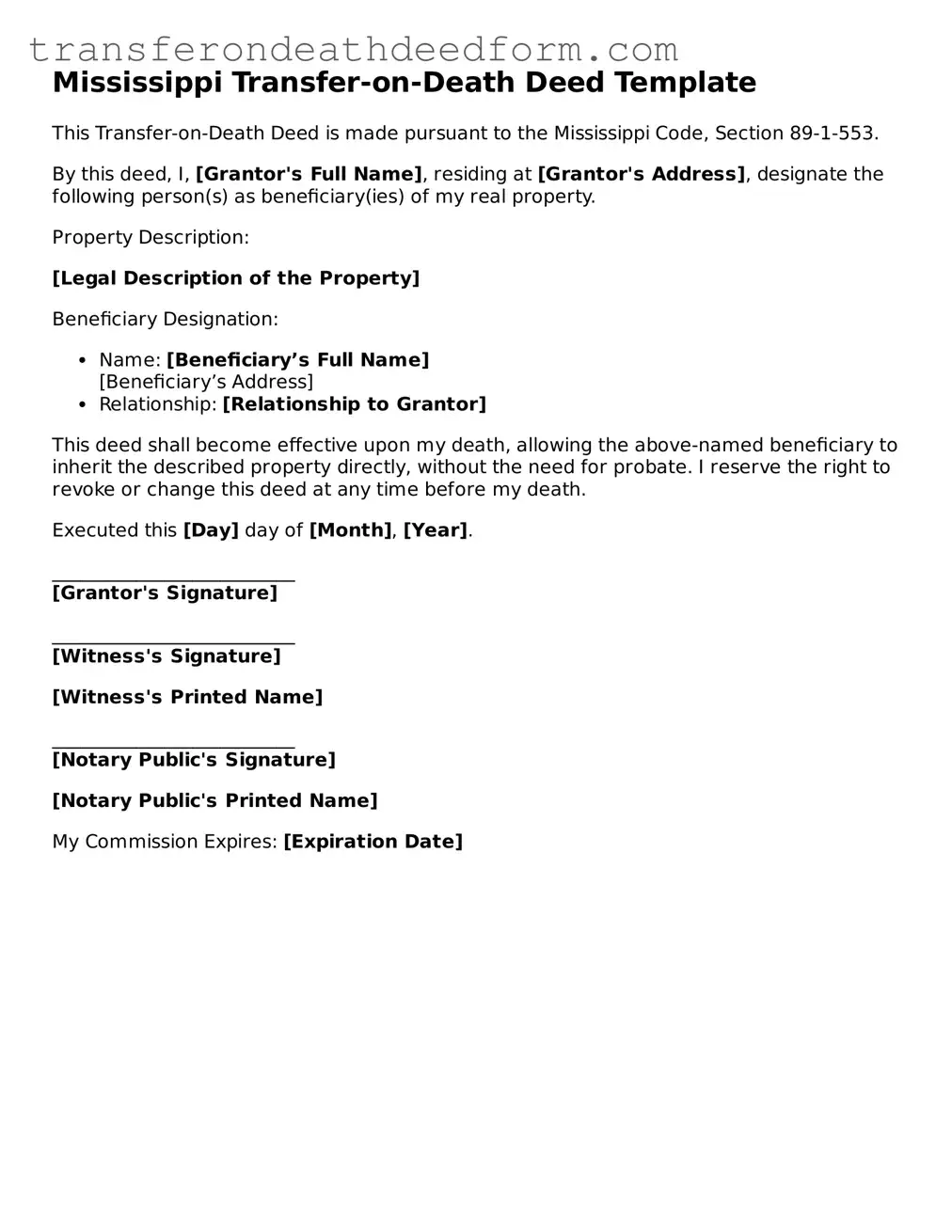Transfer-on-Death Deed Form for Mississippi
The Mississippi Transfer-on-Death Deed is a legal document that allows property owners to transfer their real estate to designated beneficiaries upon their death, without the need for probate. This form provides a straightforward way to ensure that your property is passed on according to your wishes. Understanding how to properly use this deed can simplify the transfer process for your loved ones during a difficult time.
Get My Document
